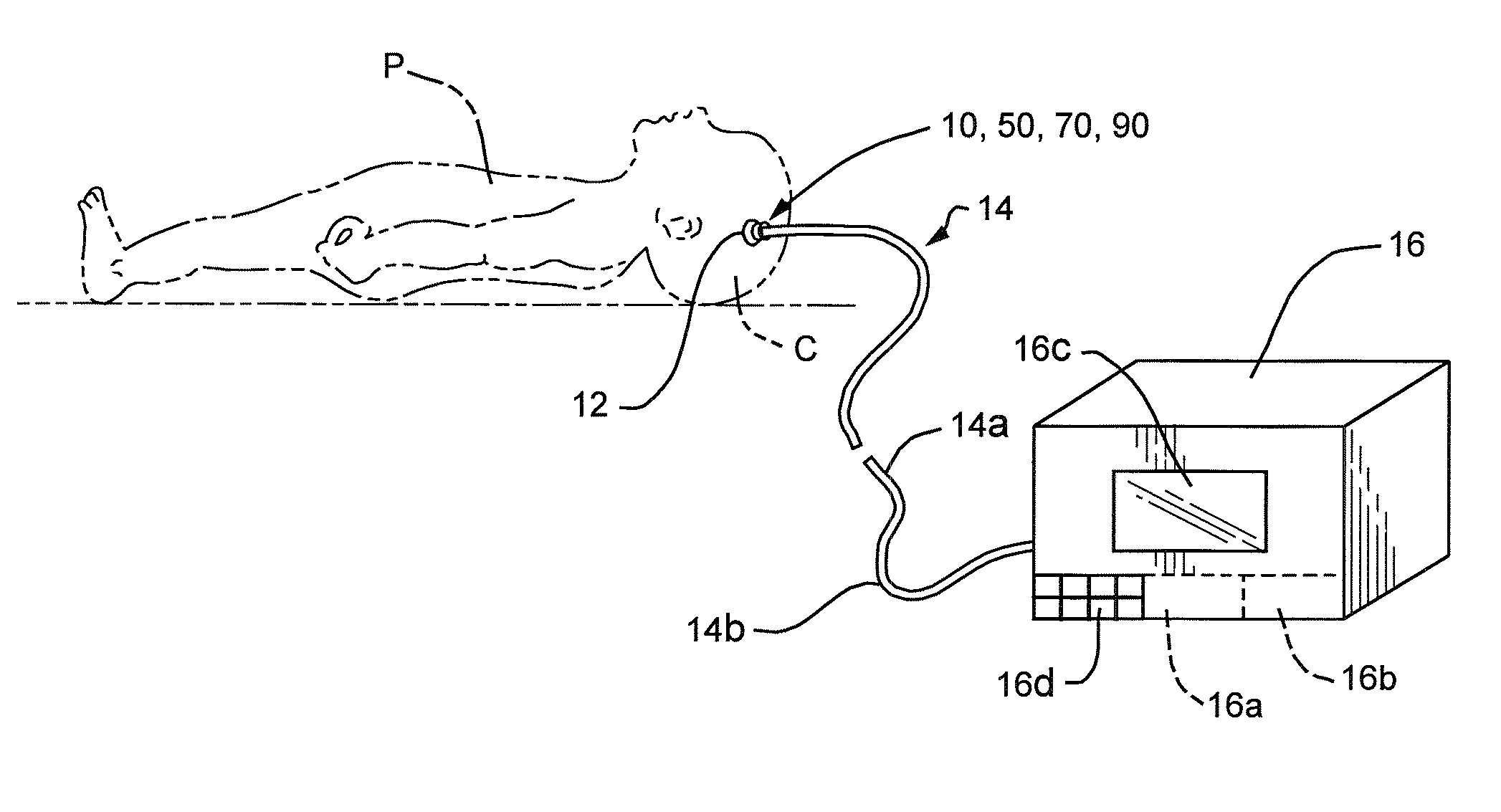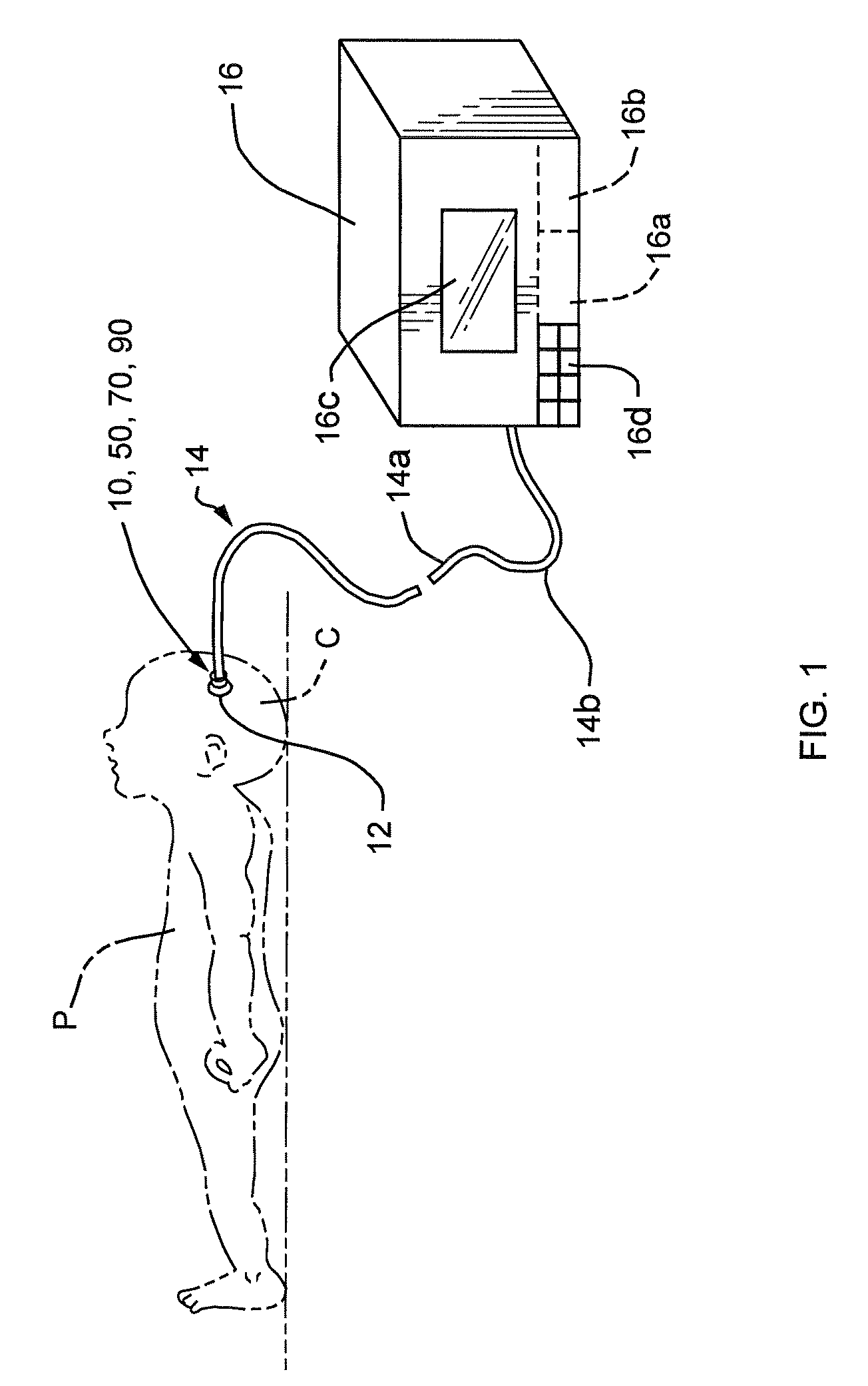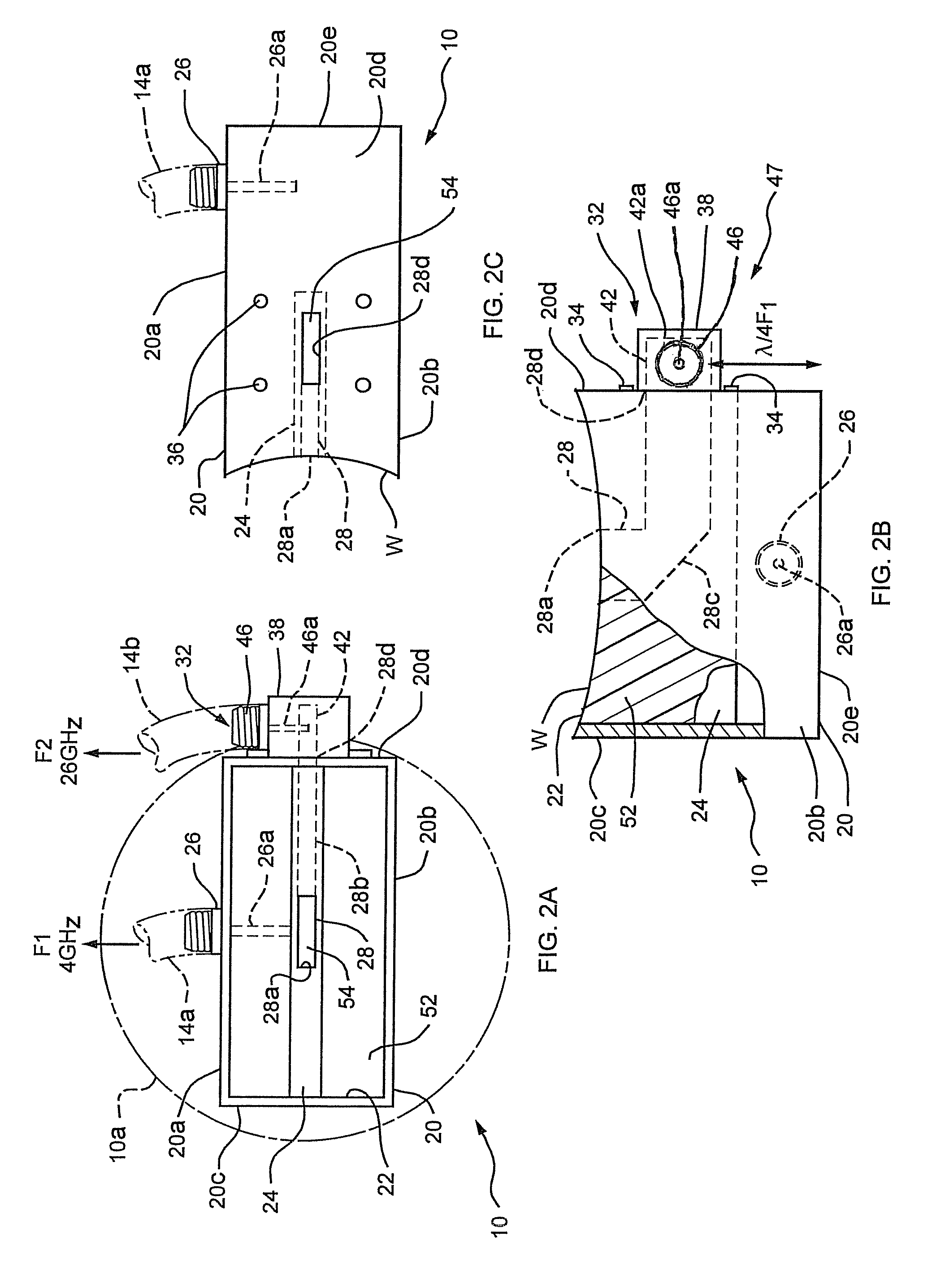Dual mode intracranial temperature detector
a temperature detector and intracranial technology, applied in the direction of optical radiation measurement, instruments, applications, etc., can solve the problems of serious brain injury called hypoxic-ischemic encephalopathy, serious problem of newborn hypoxia or asphyxia, etc., and achieve the effect of ensuring the safety of the patien
- Summary
- Abstract
- Description
- Claims
- Application Information
AI Technical Summary
Benefits of technology
Problems solved by technology
Method used
Image
Examples
embodiment 50
[0055]In this embodiment 50, the two antennas, i.e. waveguide 20 and stripline 62, may operate at the same frequency, i.e. F1=F2=4 GHz, with the stripline 62 having a shorter antenna pattern than that of the waveguide 20 by virtue of its much smaller aperture 62a. In some applications, the antenna in septum 24′ may be a coaxial antenna instead of a stripline.
embodiment 10
[0056]As with the first transducer embodiment 10, the two antennas are coupled by cable 14 to receiver / control unit 16. However, since they operate at the same frequency, their outputs may be time shared with a single radiometer in receiver 16a of unit 16 to be described, enabling the unit 16 to display the near surface temperature and the temperature at depth in the patient's cranium C. For the same reason, transducer 50 does not require a diplexer.
[0057]The septum 24′ in transducer 50 may actually comprise two circuit boards 69a and 69b positioned side by side as shown in FIG. 3C, the thickness of the boards being exaggerated for clarity. Actually, each circuit board is only in the order of 0.32 inch thick with copper cladding 70 (0.007 inch) on the outboard face and perhaps some edges of the boards to constitute a ground plane. The stripline 62 is printed on circuit board 69a as a copper trace having a thickness of about 0.007 inch. Preferably, the circuit boards 69a, 69b are Dur...
PUM
 Login to View More
Login to View More Abstract
Description
Claims
Application Information
 Login to View More
Login to View More - R&D
- Intellectual Property
- Life Sciences
- Materials
- Tech Scout
- Unparalleled Data Quality
- Higher Quality Content
- 60% Fewer Hallucinations
Browse by: Latest US Patents, China's latest patents, Technical Efficacy Thesaurus, Application Domain, Technology Topic, Popular Technical Reports.
© 2025 PatSnap. All rights reserved.Legal|Privacy policy|Modern Slavery Act Transparency Statement|Sitemap|About US| Contact US: help@patsnap.com



